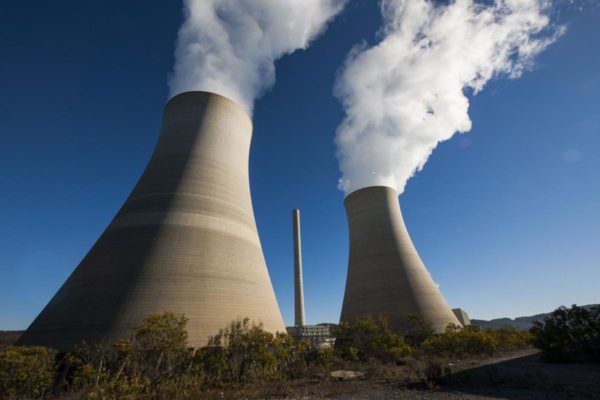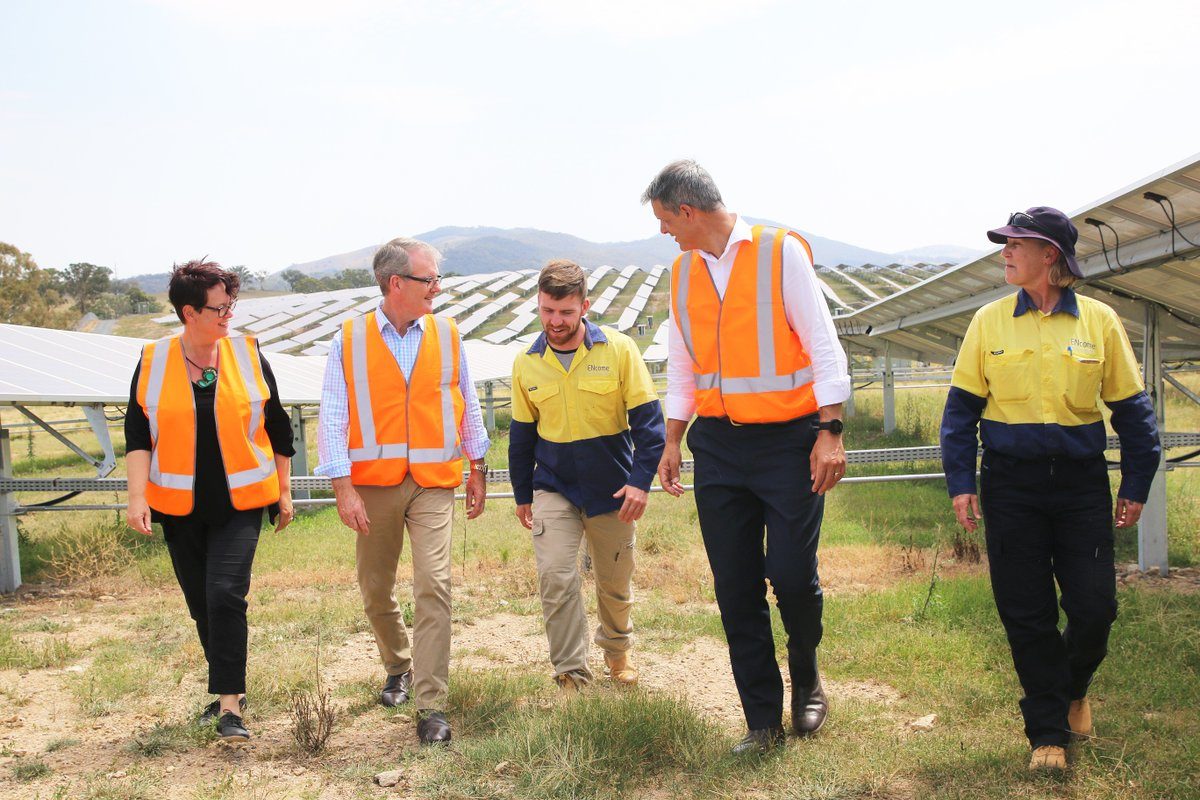Leader of the State Opposition party Michael Daley today announced that if elected on March 23, Labor will use reverse auctions to deliver 6 GW of renewable energy backed by storage, and establish a state-owned corporation to deliver a further 1 GW of renewables and storage — all within a 10-year timeframe.
Today’s policy outline, when added to the Solar Homes policy Labor announced on February 9 — to provide rebates of up to $2,200 on installation of rooftop PV systems throughout the state to households with an income of $180,000 — is calculated to deliver a combined total of 9 GW of new renewable energy and a 14% reduction in NSW carbon emissions by 2030.
“The urgency is upon us,” Shadow Minister for Energy and Climate Change, Adam Searle, told pv magazine. The biggest catalyst for Labor’s ambitious new policy, says Searle, is that “Over the next 15-16 years, 9 GW of electricity generation that we rely on today is scheduled to retire and we’re not getting the new investment we need to build the energy generators of the future.”
The shadow minister is referring to the forecast retirement of coal-fired power generators in the state, with Liddell power station expected to close in 2022, and Bayswater, Vales Point and Eraring facilities to follow within 10 years. That will leave the Mt Piper power station, built in 1992-93, with its two 70 MW coal-fired steam turbine generators, as the last of NSW coal-fired plants standing, with its stated capacity to power 1.18 million homes per annum.
Labor’s policy proposal aims to power more than 3 million homes, which Searle says is “as many the state has today”.

Image: Energy Australia
Extra gigawatts to power electrification of land transport
He explains that Labor is looking to generate more energy than is currently required, “so that we can move towards electrification of land transport and decarbonising the economy and society more broadly.
“We’ll need a much higher level of electricity to do that, but first we need to replace what we’re using and then bring on more supply and bring prices down,” he told pv magazine.
Searle anticipates that solar PV generation, as an established technology, will continue to play a “massive” role in Labor’s envisaged energy transition. But he added that Labor’s intention is to leave room for the emergence of new renewable technologies such as thermal solar, floating solar, battery storage and pumped-hydro storage.
“So as we roll out the reverse auctions, which we’ll design and deliver in conjunction with the Australian Energy Market Operator and industry and consumers, some rounds will be technology specific, while others will be technology neutral,” he says, which will invite developers put up the most cost-effective and efficient solutions for each region or market sector.
The need to secure energy supply is closely followed in Labor’s rationale by the need to tackle climate change and the imperative to drive energy prices down.
“Renewable energy has never been more affordable, whether at a household level or at a system-wide level,” says Searle, but that is not being reflected in electricity pricing, which is also part of the reason why Labor has included a state-owned entity in its plans.
Back to the future?
“The energy market is very concentrated and we need a lot of reform,” explains Searle. “Privatisation has led to a lack of trust in the market. People have just been ripped off by the energy companies, so, we need to have an honest broker.” He says the government-owned corporation will also provide some systems security, investing or seeding investment in areas in which “the market either cannot or will not act.”
New renewable generation, 4 GW of which Labor is proposing to introduce within the four-year period of its government post-election, will for the most part says Searle, be transmitted on existing lines as it replaces coal-fired load.
However, he emphasised that NSW Labor has had discussions with transmission and network companies about how it might, if elected, assist in supporting strategic upgrades to the transmission system.
“NSW Labor supports in principle, the Integrated System Plan developed by AEMO. We know that strategic investment in transmission upgrades can unlock value in new investment, but will also mean we have to spend less money investing in new energy generation projects. So we’re committed to that.”
But he says that in NSW’s decentralised energy future, we’ll have many more smaller energy generators scattered all across the state, “concentrated where there is good resource, and where transmission lines are already in place”.
The NSW Opposition has calculated that its policy for igniting an unprecedented boom in renewable energy generation will in turn directly generate at least 3,400 jobs in regional areas where most new plant will be constructed, with many thousands of related jobs created throughout the renewable supply chain and associated services.
John Grimes, CEO of the Smart Energy Council described the state Labor policy announcement as “an absolute game-changer”.
Grimes applauded Labor’s initiative, saying that today’s announcement together with last week’s commitment to 500,000 new solar homes represents, “a smart plan for a smart energy future”.
Searle promised details of the policy will be released tomorrow, Tuesday 19 Feb, alongside further pre-election announcements.
Today @NSWLabor has announced a significant #energy policy to secure the State’s energy supply; deliver 7GWh of new #RenewableEnergy to power over 3million homes; cut carbon emissions by 12% & drive electricity prices down. PLUS create 13,000+ direct jobs in the regions! #nswpol pic.twitter.com/wRRO1rzA1f
— Adam Searle (@AdamSearleMLC) February 18, 2019
This content is protected by copyright and may not be reused. If you want to cooperate with us and would like to reuse some of our content, please contact: editors@pv-magazine.com.









By submitting this form you agree to pv magazine using your data for the purposes of publishing your comment.
Your personal data will only be disclosed or otherwise transmitted to third parties for the purposes of spam filtering or if this is necessary for technical maintenance of the website. Any other transfer to third parties will not take place unless this is justified on the basis of applicable data protection regulations or if pv magazine is legally obliged to do so.
You may revoke this consent at any time with effect for the future, in which case your personal data will be deleted immediately. Otherwise, your data will be deleted if pv magazine has processed your request or the purpose of data storage is fulfilled.
Further information on data privacy can be found in our Data Protection Policy.